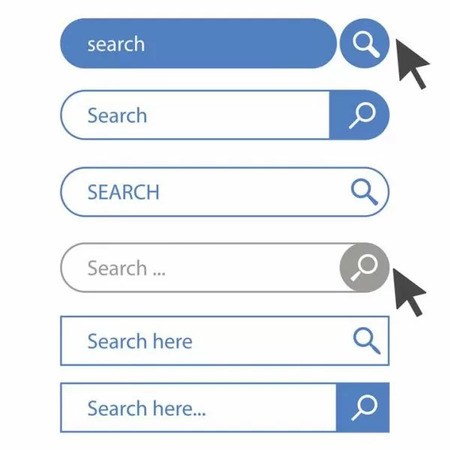What is vertical search optimization or VSO?
From an interactive and transactional perspective, search is the fundamental digital discovery activity. People input text or voice to search, find alternatives, explore, and then make decisions. Traditional or horizontal search engines report billions of queries per day and in excess of 2 trillion queries worldwide per year. Bloomberg reports that more than 48% of shoppers start their search at Amazon, while 35% now start shopping searches at traditional search engines. Despite that traditional Search continues to be the largest trackable channel with 2017 BrightEdge research showing that sites average 51% of traffic from Organic Search. Vertical search is the indexing and exposition of content focused in a site, category, or industry. Travel, restaurants, medical, fashion, entertainment, news, car, jobs, and photography sites are all examples of vertical sites with vertical search. Mobile apps are also vertical experiences. Shopping sites are rather vertical to the degree that they specialize in the product selection and pricing they offer. Read more on our take on vertical search engines in this POV.
As consumers move along the customer journey, they use horizontal and vertical sites and apps to zero in on what they are looking for and take action. One of the most common elements of all sites is internal site search. Nearly every site offers internal search, and those that don't are likely creating dissatisfaction for their user that will cause them to bounce off the site when they cannot easily locate what they are looking for. How are you and your marketing team preparing to address this broadening of search and apply the well-honed traditional search optimization skills to these diversifying vertical channels where your customers are increasingly initiating and completing customer journeys?
Are traditional searches decreasing?
No, overall searches are increasing. The proportion of horizontal desktop computer searches is dropping in favor of mobile searches, app searches, and vertical searches. While searching is fundamental, large, and significant, people now spend more than 20% of all digital time on social media, and 80% of that occurs on mobile devices and within native mobile apps, according to Business Insider. The daily query volume in Facebook has reportedly reached about half that of Google. Facebook is both a vertical and horizontal search engine, meaning that people look for friends in Facebook and have also started to look for general topics, news, and products. Facebook is now the top referrer to content publishers, according to Parse.ly. Consider the volume of vertical searches on Facebook, Twitter, LinkedIn, SlideShare, Pinterest, Reddit, Yelp, TripAdvisor, Zillow, Consumer Reports, the App Store, Google Play, voice queries on digital assistants, shopping searches on the Amazon site and app and the eBay site and app, and travel searches on Expedia, Travelocity, and Kayak. Salesforce, Dropbox, and Box are important internal and channel search engines for B2B companies and networks. Think about Google as multiple vertical search engines as displayed in the different SERP layouts with different optimization parameters and requirements: YouTube for video, Google Images, Google Local, Google News, Google Shopping, and Google Play for apps. Site search across billions of sites, including Wikipedia, Craigslist, and WebMD, is generating hundreds of billions of queries daily. In some cases, regular users might find the user-generated content and reviews more relevant and trustworthy than content controlled by a single corporation.
Is site search on your own site vertical search and can you do VSO on it?
Yes, your own site search is a vertical search engine because it it looks for answers within one domain. Most content management systems, like WordPress, Drupal, and Joomla include free site search modules. The modules allow you to add weighting to the basic matching criteria of Title, h1, meta description, and text. More sophisticated site search modules can be purchased for small amounts, like $29-$800 a month and run on these CMSs. Google used to make a product called Google Search Appliance, but they have discontinued it. You can find 10 site search alternatives in this recent blog post. These paid alternatives will give you more control of the crawl and the algorithm and help you understand how search engines work. Optimizing your own site for SEO and site search will leverage into any vertical environment where you can edit the pages.
What do vertical and horizontal search on all of these sites have in common?
When the vertical alternative has a large app installed base, is more convenient, and is a trustworthy brand that provides valuable answers with low friction and high relevance, users will go directly there and engage. Content in vertical search needs to be discoverable, made visible, and matched to user intent, just like traditional Search. Every site's search functionality is based on an algorithm. No search algorithm in the world is as sophisticated as Google, so the others should be easier to figure out what criteria they use to rank. BrightEdge has explored in other blog posts the ranking criteria and VSO effort of YouTube, Pinterst, Amazon, and Google Images and can provide some guidance. If the vertical sites do not enable direct page management, they likely enable data feeds through an API. Optimizing a data feed is analagous to optimizing a page it is just deconstructed into content, fields, and tags.
Sean Kainec of Comcast, speaking at the BrightEdge Share Insights Tour in New York suggested that we expand the meaning of SEO from Search Engine Optimization to Site Experience Optimization to lead the way to capturing the emerging opportunities across the sites and search engines used in the customer journey.
How do you do VSO?
Successful VSO is similar to SEO. First, you need to determine if the site enables users to build and manage original content. Sites like Amazon, eBay, Pinterest, LinkedIn, SlideShare, Facebook, Wikipedia, and Reddit do. Build out pages for those sites that are focused, authoritative, attractive, and include the kind of images and videos that users might like. Invest time in metatags and descriptions. In all content areas exceed the development of your competitors, which means better written and more text, higher quality and better images, helpful videos, and reviews or Likes where applicable. These all will apply to your Yelp page for example. It will be the SEO's job to help all the marketers and commerce colleagues understand the VSO requirements of the relevant sites. Businesses should make sure the NAP, or name address, and phone, are correct and consistent in all horizontal and vertical search locations.
Let’s look at what skills are common to horizontal and vertical search:
- Analyzing consumer intent and selecting targeted topics
- Content creation, including compelling headline and authoritative body copy
- Page markup and metadata
- Applying clear and persuasive page titles and headlines
- Site experience management
- Proper use of images and videos
- Integration through APIs and extraction of XML feeds
- Use of next-step internal links and CTAs
- Technical management and page load time
- Schema and structured data
How should SEOs approach the evolving vertical search (VSO) landscape?
- Invest directly to maintain a presence in vertical and social sites relevant to your audience, Facebook, Twitter, YouTube, LinkedIn/Slideshare, Amazon, Yelp, and Wikipedia
- Be sure to optimize your content and for mobile experience on the vertical site
- Always work to improve page load speed and transaction speed, especially on mobile, e.g., don't upload non-optimized images
- Manage the social signals and Open Graph fields and tagging
- Consider whether a mobile app is necessary for your audience
- Master App Store and Google Play optimization if you have an app
- Master site search and continually enhance the results you display
- Enhance your ability to drive positive reviews from your customers
- Start to invest in structured data that can communicate to crawlers regardless of device type and form factors
- Develop as many integrations with vertical search and shopping sites and apps as makes sense for your business
Should you increase focus on and investment in vertical search engines?
Yes. SEO skills are now needed in more search engines and sites than ever. Use the topic of vertical search and VSO to start elevating all SEO work within your organization. Make a compelling case to management to invest in the resources and people needed to make sure your company is represented and gets a proper foothold in the rapidly expanding vertical search landscape to support customers finding you across the sites they use in their customer journeys. Request a demo to learn more about BrightEdge.




